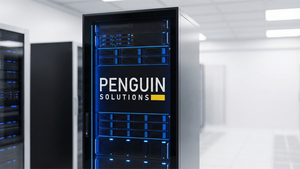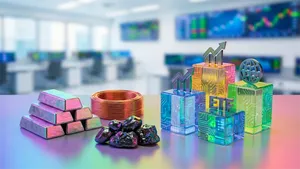Best Stablecoins 2025
 Photo from Unsplash
Photo from Unsplash
Originally Posted On: https://stablecoininsider.com/2025/01/04/best-stablecoins-2025/
Best Stablecoins in 2025: Global Usage, Pros and Cons
The landscape of stablecoins has grown immensely, providing a bridge between traditional finance and the volatile world of cryptocurrencies.
This article delves into the top 10 stablecoins for 2025, focusing on their global usage, pros, cons, market caps, and a comparative analysis of the lesser-known stablecoins with the market leaders, USDT and USDC.
1. Tether (USDT)
USDT’s global acceptance is unparalleled, accessible in nearly all countries where crypto trading is legal. It’s particularly prevalent in Asia, Europe, and North America, though it faces regulatory hurdles in some EU nations due to MiCA.
Moreover, its widespread use makes it a staple for traders and liquidity providers on numerous exchanges. However, its dominance has also led to increased scrutiny over its reserve backing and compliance with local laws.
Pros:
- Exceptional liquidity, making it the go-to choice for traders.
- Available on numerous blockchains, enhancing its utility.
Cons:
- Historical transparency issues regarding its reserve backing have caused trust concerns.
Market Cap (January 2025): Approximately $118 billion.
- Tether
2. USD Coin (USDC)
USDC enjoys wide acceptance, with usage spanning the globe except where cryptocurrency is restricted. It’s highly favored in DeFi ecosystems, trading platforms, and for cross-border payments, though it might face limitations in some EU countries due to upcoming regulations.
Its transparency and regulatory compliance make it a preferred choice for institutional investors. However, its centralized nature could be a point of contention for those advocating for fully decentralized solutions.
Pros:
- Transparent reserve audits and regulatory compliance.
- Widely used in DeFi and on major exchanges.
Cons:
- Its centralized nature might not align with the ethos of some crypto advocates.
Market Cap (January 2025): Around $35 billion.
- Circle
3. Ethena USD (USDe)
USDe, primarily utilized in DeFi, is available wherever Ethereum operates, excluding countries with cryptocurrency bans. Its innovative approach makes it a niche player in regions with a strong DeFi community.
By leveraging a delta-neutral strategy, USDe offers yield generation, appealing to users seeking returns in a stablecoin format. Nevertheless, its limited exposure outside DeFi circles means it hasn’t yet achieved the broad market adoption seen with more established stablecoins.
Pros:
- Yield generation through a unique delta-neutral strategy.
- Decentralized nature appealing to DeFi enthusiasts.
Cons:
- Its newness means less historical data on stability during market turmoil.
Market Cap (January 2025): About $2 billion.
- Ethena Labs
4. Dai (DAI)
DAI’s decentralized structure allows for broad usage wherever Ethereum is accepted, with significant adoption in DeFi-focused regions like the US, Europe, and Asia. Its collateralized system by various cryptocurrencies adds a layer of security and diversity.
However, this also means its stability can be influenced by the volatility of its collateral, requiring active management by the MakerDAO community to maintain its peg.
Pros:
- No central control reduces counterparty risk.
- Versatile in DeFi applications for lending, borrowing, etc.
Cons:
- Dependent on the stability of its collateral pool.
Market Cap (January 2025): Roughly $5 billion.
- MakerDAO
5. Ethena Staked USD (sUSDe)
Similar to USDe, sUSDe’s usage is confined to regions where DeFi on Ethereum is legal, offering yield opportunities to users in these areas. Its focus on staking provides an additional layer of interest for DeFi participants.
Yet, its niche market means it might not be as widely recognized or used outside of dedicated DeFi communities.
Pros:
- High yield potential through staking.
- Synthetic nature combines stability with potential growth.
Cons:
- Limited track record as a new asset.
Market Cap (January 2025): Approximately $1.5 billion.
- Ethena Labs
6. First Digital USD (FDUSD)
FDUSD is predominantly used in regions where Binance operates, which excludes some countries like the US due to Binance’s regulatory landscape. Its integration with Binance’s ecosystem provides substantial liquidity and trading options.
However, its reliance on Binance’s operational regions limits its global footprint compared to more universally accessible stablecoins.
Pros:
- Transparent reserve management.
- Expanding blockchain support for wider use.
Cons:
- Availability tied to Binance’s operational permissions.
Market Cap (January 2025): About $2.6 billion.
- Binance
7. Binance USD (BUSD)
BUSD’s availability is closely linked to Binance’s services, facing restrictions in the US after regulatory scrutiny, but remains a strong player in other regions. Its backing by the NYDFS adds a layer of trust for users where it’s available.
Nonetheless, its future might hinge on Binance’s ability to navigate the complex web of global regulations.
Pros:
- NYDFS regulation lends credibility in supported regions.
- High liquidity on Binance.
Cons:
- Dependent on Binance’s global licensing status.
Market Cap (January 2025): Approximately $17 billion.
- Binance
8. TrueUSD (TUSD)
TUSD can be used in many countries, with a significant presence in Asia and North America. Its daily attestations make it attractive for users looking for transparency. This focus on daily transparency sets it apart from other stablecoins, offering peace of mind regarding its dollar backing.
However, its lower market cap means it doesn’t match the liquidity of leading stablecoins like USDT or USDC.
Comparison with USDT and USDC:
- Pros over USDT: More transparent with daily reserve attestations.
- Cons compared to USDC: Lower liquidity and adoption, especially in DeFi.
Pros:
- Daily attestations for unparalleled transparency.
- Fully backed by USD.
Cons:
- Liquidity and use case diversity are not on par with USDT or USDC.
Market Cap (January 2025): Around $500 million.
- TrustToken
9. Pax Dollar (USDP)
USDP has a more limited footprint but is operational where Paxos has partnerships or direct services, mainly in North America and parts of Asia. Its regulatory oversight from Paxos adds a level of assurance for users in these regions.
However, its smaller market cap and less widespread adoption mean it serves a more niche market compared to the dominant stablecoins.
Comparison with USDT and USDC:
- Pros over USDT: Monthly audits offer some transparency, though not daily like TUSD.
- Cons compared to USDC: Less widespread adoption and liquidity.
Pros:
- Regulatory oversight from Paxos enhances trust.
- Monthly audits for reserve backing.
Cons:
- Market penetration and use cases are less extensive.
Market Cap (January 2025): Approximately $111 million.
- Paxos
10. Gemini Dollar (GUSD)
GUSD’s usage is mostly confined to the US due to Gemini’s focus, though it’s available in some other countries where Gemini operates. Its regulatory compliance with NYDFS provides a level of security for American users.
However, this focus on the US market limits its global reach, making it less versatile for international transactions compared to more broadly adopted stablecoins.
Comparison with USDT and USDC:
- Pros over USDT: Regulatory compliance in the US provides a sense of security.
- Cons compared to USDC: Limited international presence and liquidity.
Pros:
- NYDFS regulation, emphasizing regulatory compliance.
- 1:1 backing with USD.
Cons:
- Less global reach and lower liquidity compared to market leaders.
Market Cap (January 2025): Around $100 million.
- Gemini
Comparing Smaller Stablecoins to USDT and USDC
Transparency and Compliance: TUSD, USDP, and GUSD offer varying degrees of transparency which are generally higher than USDT but might not match USDC’s frequent audits. However, their lower market caps mean less liquidity and fewer use cases compared to USDT and USDC.
Adoption and Liquidity: USDT and USDC have a significant advantage in terms of market cap and liquidity, making them more practical for everyday transactions, trading, and DeFi applications. TUSD, USDP, and GUSD are niche players, often preferred for their regulatory compliance or specific regional advantages.
Innovative Features: None of these three match the innovative yield or ecosystem features of some newer stablecoins like USDe or sUSDe but provide stability and compliance benefits.
Global Usage: While USDT and USDC are nearly ubiquitous, TUSD, USDP, and GUSD have more constrained geographical usage, often due to their issuers’ operational licenses or partnerships.
Here’s a comparison table for the stablecoins discussed:
| Stablecoin | Issuer | Market Cap (Jan 2025) | Global Usage | Pros | Cons | Regulatory Compliance | Use in DeFi |
|---|---|---|---|---|---|---|---|
| USDT | Tether | $118 billion | Nearly global, restrictions in some EU countries due to MiCA | High liquidity, multi-blockchain | Transparency issues | Limited | High, widely accepted |
| USDC | Circle | $35 billion | Global except where restricted, potential EU limitations | Transparent audits, regulatory compliance | Centralized issuance | High | Very high, integral to many DeFi protocols |
| USDe | Ethena Labs | $2 billion | Where Ethereum DeFi is legal | Yield generation, decentralized | Newer, less tested | Minimal, decentralized | High, niche yield-focused |
| DAI | MakerDAO | $5 billion | Wherever Ethereum is used, strong in DeFi regions | Decentralized, diverse collateral | Stability depends on collateral | Decentralized, no direct regulatory compliance | Extremely high, foundational in DeFi |
| sUSDe | Ethena Labs | $1.5 billion | Similar to USDe, focus on DeFi | Staking yield, synthetic stability | Limited recognition outside DeFi | Minimal, decentralized | High, for staking in DeFi |
| FDUSD | Binance | $2.6 billion | Where Binance operates, not in the US | Transparent reserve, blockchain expansion | Limited by Binance’s operational regions | Tied to Binance’s compliance | Moderate, depends on Binance’s DeFi offerings |
| BUSD | Binance | $17 billion | Restricted in the US, strong elsewhere | NYDFS regulated, high liquidity on Binance | Dependent on Binance’s licensing | Moderate, regulated in supported regions | Moderate to high on Binance’s DeFi platforms |
| TUSD | TrustToken | $500 million | Strong in Asia and North America | Daily attestations for transparency | Lower liquidity | Transparent but less regulated than some | Moderate, less prevalent in DeFi |
| USDP | Paxos | $111 million | Limited to where Paxos has partnerships | Regulatory oversight, monthly audits | Limited market cap and adoption | High, regulated by NYDFS | Low, less integrated into DeFi |
| GUSD | Gemini | $100 million | Primarily in the US, some international | NYDFS regulation, 1:1 USD backing | Limited global reach | High, focused on US compliance | Low, not widely used in DeFi due to regional focus |
Conclusion
In conclusion, while USDT and USDC lead in market dominance, stablecoins like TUSD, USDP, and GUSD offer unique advantages for users prioritizing transparency, regulatory compliance, or specific regional services.
Understanding these differences is crucial for investors and users navigating the stablecoin liquidity and adapting to evolving stablecoin regulations.
More News
View More




Recent Quotes
View MoreQuotes delayed at least 20 minutes.
By accessing this page, you agree to the Privacy Policy and Terms Of Service.